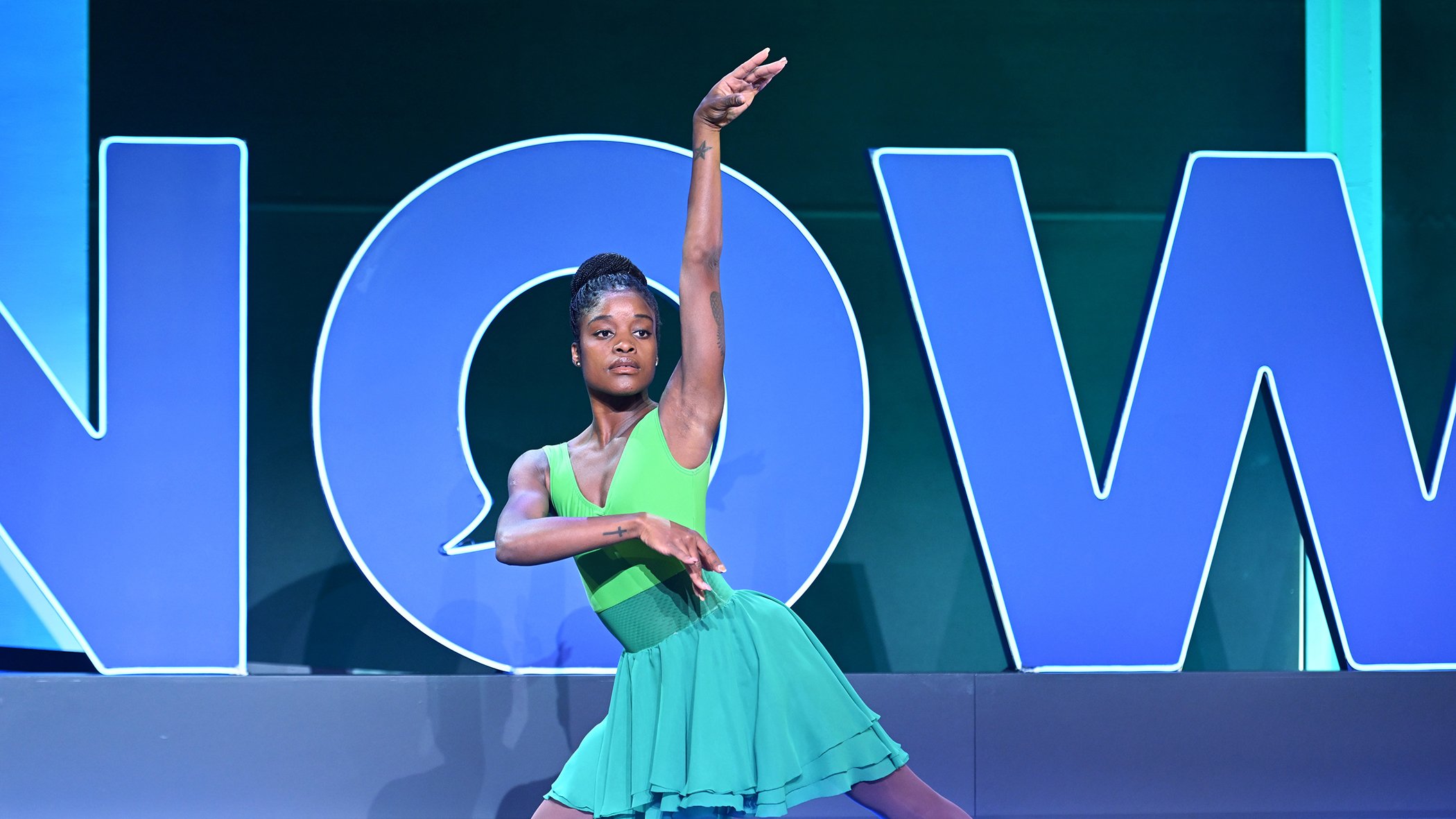Close your eyes and breathe it in. You’re not in your usual setting. In fact, the air here is warm with humidity that moistens your skin and tousles your hair. You can smell the damp earth, the sweet tropicana, and something fresh — yet slightly medicinal — that you can’t quite place. As you stand in this new element, familiarizing yourself with it, it’s important to take in what you hear.
Shhh… If you listen closely, you can catch the environment speaking to you in sounds that layer over each other. It’s the rustle of leaves responding to the wind, the chitter-chatter of birds greeting each other good morning, the whoops and howls of monkeys playing on branches above you, and the rumble of water rushing somewhere across the land. Open your eyes. You, dear friend, are in the Amazon rainforest.
Well, a very small part of it, anyway — and there’s a reason for that: capturing this vast natural wonder is no easy feat. However, two Brazilian artists — composer Leandro Albuquerque and ballerina Ingrid Silva — collaborated to do just that in a moving performance at Global Citizen’s annual thought leadership summit, Global Citizen: NOW, in New York, which took place in April, 2025.
The Amazon as music
 Ingrid Silva performs onstage during Global Citizen NOW at Spring Studios on April 30, 2025 in New York, NY.
Ingrid Silva performs onstage during Global Citizen NOW at Spring Studios on April 30, 2025 in New York, NY.
“Conveying the richness of the Amazon in just two minutes is a challenge,” explains Albuquerque, “but I focused on capturing its emotion and its diverse ecosystems. I worked on weaving through the forest, on the birds singing, on the rivers and the water. As the composition unfolds, there’s harmony and intensity — intensity that reflects environmental threats; then from that, a hope for serenity.”
Tears of the Green is an original composition created specifically for Silva’s ballet performance at Global Citizen: NOW, where it was announced that Global Citizen would bring its music festival to Brazil — featuring artists like Anitta, Gaby Amarantos, and Seu Jorge — in a call to protect the Amazon against the climate crisis.
This ode to the Amazon begins as a story from dusk to dawn, the music awakens gently, then builds steadily to tell the story of the environment and its inhabitants. As it crescendos, we reach the intensity that Albuquerque speaks of, and soon after, it lands on a serene sense of harmony.
“When I first heard Leandro’s composition, I got goosebumps,” Silva tells Global Citizen. “It was one of those moments where everything just clicked. He didn’t just follow the brief — he felt it. The music carried the emotion we wanted to convey and gave the project a soul. It was powerful, and honestly, I felt really proud to be part of something so thoughtfully crafted.”
A call to action
Human-caused climate change has been attacking the Amazon rainforest for decades. Deforestation, pollution, and fossil fuel exploration have had a heavy hand in destroying vast areas of the rainforest and displacing hundreds of Indigenous communities who call it home. If we continue at this rate, the Amazon could perish. If we lose the world’s largest rainforest, we lose the essence of life as we know it.
The Amazon, tucked between nine South American countries, is vital for climate regulation — including rainfall generation across the region and the absorption of tons of climate-warming carbon emissions every year. The immense loss of this vital resource at the hands of humanity cannot be understated.
This is a harrowing picture, but hope remains — as long as there’s unity in action. That’s the main message behind Tears of the Green, and Silva’s performance to it.
“I believe the Amazon needs a voice,” says Albuquerque, “In fact, it needs everyone's voices. What happens in the Amazon affects everyone. It needs people to raise awareness, speak out, and take action.”
The creative process
Both Albuquerque and Silva let the issue speak to them in the creation of their art for this performance, and it was clear the Amazon had a great deal to say.
On the choreography, Silva explains: “I let myself be guided by the feeling of being free. I thought about what the Amazon means to me — its strength, beauty, and untamed spirit. Every movement came from that place. I didn’t overthink it; I just let my body respond to the music and the emotion behind it. It was all about connecting deeply, trusting my instincts, and letting the story move through me.”
Albuquerque also used specific instruments in the song, as a representation of those who call the Amazon home. Not only did the instruments themselves originate from Amazonian Indigenous people, but they’re fashioned to sound like animals and other lives from the rainforest.
“I used instruments such as the cuica, a friction drum with a high-pitched tone that mimics animal calls like a bird or a monkey,” he explains. “Another specific instrument I used was called the berimbau, a single percussion instrument used in Capoeira, which reflects the tension of life in the Amazon.”
He continues: “I see these instruments not just for their music, but they are actually vessels that hold the roots of history; they hold so much, there's so much in these instruments that have been used for years.”
Altogether, this culminated in an awe-inspiring collaboration of music, dance, and visuals that brought to life the urgency of defending the rainforest — and the planet it sustains.
You can listen to Leandro Albuquerque's music on Apple Music & Spotify.